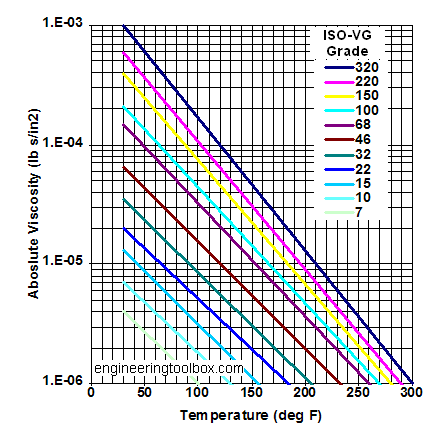

At temperatures below this limit, the elevated oil stiffness interferes with adequate lubrication and related hydraulic functions in a machine. This viscosity limit represents the highest viscosity at which oil flows and properly lubricates in a system. While pour point establishes one low-temperature operating limit, other demanding requirements for low viscosity appear in critical machinery and lube system flow areas such as suction and drain piping, pumps and filters. At this point the viscosity becomes so high (usually about 100,000 centistokes, cSt) it will eliminate any visible oil flow in the pour point test.
DRIVEN OIL VISCOSITY CHART FREE
With their low paraffinic content, wax free synthetic and naphthenic mineral oils can be further cooled to a lower pour point. Although gelling is reduced by these long-chain additive molecules, individual wax particles separating out of oil at low temperatures may still plug filters and impede circulation. Pour point additives that suppress this gelling effect of the wax are used in many automotive oils as well as in industrial lubes. With most mineral-based industrial oils (designated as turbine, hydraulic, industrial and machine oils), this pour point corresponds to the temperature that freezes the paraffin molecules of the oil into a white crystalline wax that will eventually immobilize the overall oil. This is the lowest temperature at which oil will flow when chilled under prescribed laboratory conditions (ASTM D97). The low-temperature limit for starting an oil- lubricated machine is often specified by the pour point of the oil.

In other cases, grease or self-lubricating materials may reduce or even eliminate troublesome low-temperature problems. Avoiding high churning and splash losses at low temperatures in gear boxes developing remedies for more efficient lubrication of bearings and lubricated joints and implementing a reliable and low- maintenance technology that enables vehicle wheel bearings to safely operate over wide temperatures require careful lubricant selection.įortunately, specially compounded mineral oils or synthetics are available that match cold flow requirements.1 In difficult cases, heating is needed for piping, reservoir and filters. Industries and transportation in northern parts of the United States, Europe and Canada are vulnerable to harsh outdoor conditions during winter months. As a result, machines often cannot start or excessive friction causes a complete failure. Dropping below the pour point and the higher viscosity not only restricts oil flow to bearings and other machine elements, but also translates into high startup torque. For more information on the viscosity grade specifications, a quick search of the Internet will identify several websites where information about SAE J300 (Viscosity Properties Test) can be found.Low ambient temperatures affect the flow characteristics of a lubricant.
DRIVEN OIL VISCOSITY CHART MANUAL
You should always consult your owner's manual for the right oil to use for your particular engine. It is not safe to assume that a higher viscosity oil is always better for your engine because other factors, such as engine design, fuel economy and power, are also related to operating viscosity. In this case, a higher number is a higher viscosity grade and provides more viscous oil at operating temperature than lower viscosity grade oil. The second part of the viscosity grade is related to the viscosity your engine sees at operating temperature. But also keep in mind that a lower W grade pumps and helps an engine to start better than a higher W grade. So the W grade is related to the lowest temperature your engine sees when you start the engine on the coldest morning of the year. The lower the number (0W is the lowest), the lower the temperature at which the product can be used. In simple language, the first part of the viscosity designation (W grade) is an indication of the product's ability to help an engine crank and start and for the engine to pump the lubricant. Which one is better to use in summer than winter (Chicago) and vice versa? There are so many different grades of oils. mean? I would really appreciate it if you could explain it in simple language so I can teach my students.


 0 kommentar(er)
0 kommentar(er)
